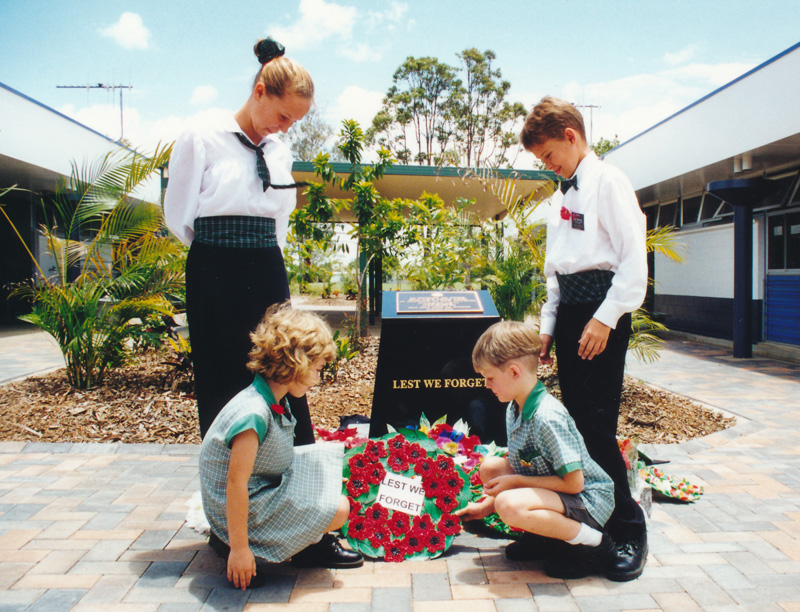The News-Mail story: ‘The Message of the Anzacs’, April 2015
A story for The News-Mail, the newspaper of my hometown in Bundaberg, Queensland. Excerpt below.
Anzac Day at Bundaberg East State School in 1993 was an unceremonious affair all but indistinguishable from the weekly whole-school assembly.
To the school’s newly appointed teacher-librarian, Paul McMillen – my father; a traditionalist who carried a briefcase to work, and coupled shorts with long socks pulled up to his knees – the spectacle was an embarrassment.
On that April morning, 250 primary school-aged children sat fidgeting on hard concrete, scarcely paying attention to what was being said by the adult addressing the student body.
At one point, as the restless murmurs grew, an admonition was delivered in a raised voice: “You should be showing more respect for what was done for you in the past!”
To which any of the students wearing bright green shirts that morning might have replied: what, exactly, are we supposed to be respecting?
It wasn’t clear.
The remembrance ‘service’ was little more than a dull formality composed solely of adults talking down to children.
The teachers’ hearts didn’t seem to be in it, either.
In all, a thoroughly forgettable occasion.
Then aged 38, and having recently transferred from a deputy principal role at a nearby primary school, McMillen had neither a particular interest in military history nor a connection to the armed forces.
Yet something hidden stirred in him that day.
Soon, he approached the school principal, Doug Ambrose – himself a recent appointment; a no-nonsense sort of bloke who wore a bushy moustache – and said, “I think we can do better than this.”
“Kids today watch war movies that are ‘glitz and glamour’; full of massive explosions and CGI,” Mr McMillen said to his boss.
“They have very little idea of what war is like. If the kids are going to respect Anzac Day, they need to have ownership. If their peers are running the service, it’ll belong to them more than a teacher talking to them, as they’re used to in the classroom.”
In response, the principal gave his new teacher-librarian the nod to proceed with his plans.
After Mr McMillen’s year of preparation outside of his regular duties – tasks which included networking with the local RSL, writing scripts to be read aloud by the Year 7 students, and building anticipation among the classes that visited his library each week – the school’s Anzac Day service of 1994 was a “monumental occasion”, says Mr Ambrose.
“It was new ground. The response from the kids and the parent community was astounding; it was one of those special moments.”
A senior student played the ‘Last Post’ on trumpet.
No adults spoke to the hushed crowd; instead, a dozen or so students.
The president of the local RSL attended, dressed in his Air Force uniform, as well as an Army Reservist who stood out from the crowd of 50 parents by wearing his greens.
Having sat on hard concrete throughout 12 years of unmemorable remembrance services during my own public education in Bundaberg, it is hard for me to imagine 250 children sitting in rapt silence, hanging on the words of their peers as they told stories of decades-old conflict and death under the watchful eyes of solemn men in uniform.
To read the full story, visit The News-Mail.
